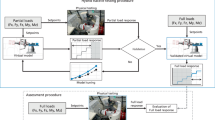Abstract
To optimize the design of their windturbines, manufacturers make use of simulation tools to predict the loads that the different components need to transmit along the drivetrain from the blades to the generator. Using detailed 3D Multibody simulation allows for in-depth studies, capturing the dynamic behavior of the overall system. Multi-body simulation is used to assess the structural reliability of components such as the gearbox and to make sure they resist the extreme and unpredictable loads from the wind for a reasonable lifetime. LMS Virtual.Lab provides state-of-the art methods to model gearboxes and the meshing of gears with varying stiffness. It also provides capabilities to model the rotorblade as well as the generator. The complete system is built from the subsystems assembled in a versatile and modular way. Using LMS Virtual.Lab Motion, a dynamic simulation is finally performed to visualize the behavior of the system trough graphs and animations. The integrated simulation capabilities within LMS Virtual.Lab environment also offer an efficient solution to analyze and optimize the durability performance, noise emissions and overall yield of wind turbines. Accurate loads are easily generated with LMS Virtual.Lab Motion thanks to state-of-the-art contact formulations suited for system level analysis. Those loads lead the engineers to evaluate the stresses occurring in each component and the vibrations generated in the structure. The environment enables to quickly analyze the effect of design changes on a specific performance attribute, which allows engineering teams to perform fast optimization loops from the early development stages onwards.
Similar content being viewed by others
References
Y. Cai, Simulation on the rotational vibration of helical gears in consideration of the tooth separation phenomenon (a new stiffness function of helical involute tooth pair), The ASME Journal of Mechanical Design 117(1995) 460–469.
Y. Cai and T. Hayashi, The linear approximated equation of vibration of a pair of spur gears (theory and experiment), The ASME Journal of Mechanical Design 116 (1994) 558–564.
ISO Standard 6336-1, Calculation of load capacity of spur and helical gears — part 1: Basic principles, introduction and general influence factors (1996).
Author information
Authors and Affiliations
Corresponding author
Additional information
Guillaume Lethé received his Master’s degree in Mechanical Engineering from the Université Catholique de Louvain-la-Neuve, Belgium, in 2005. He then received his Master’s in Science of Management degree from the same University, in 2006. Ir. Guillaume Lethé is currently Manager at the LMS International Company, Belgium, for the Virtual.Lab Motion software for Multibody dynamic simulations. His research interests include mechatronic systems for on- and off-road vehicles as well as dynamic simulations of windturbine systems.
Rights and permissions
About this article
Cite this article
Lethé, G., De Cuyper, J., Kang, J. et al. Simulating dynamics, durability and noise emission of wind turbines in a single CAE environment. J Mech Sci Technol 23, 1089–1093 (2009). https://doi.org/10.1007/s12206-009-0346-z
Received:
Revised:
Accepted:
Published:
Issue Date:
DOI: https://doi.org/10.1007/s12206-009-0346-z




